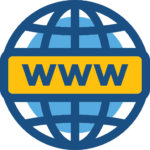Basics of Internet

The Internet is a vast network of interconnected computers and devices that has transformed the way we communicate, work, and access information. Since its inception, the Internet has grown into an essential part of modern life, enabling global connectivity and revolutionizing industries. This article explores the basics of the Internet, covering its history, structure, key components, and common applications.
What is the Internet?
The Internet is a global network of interconnected computers and devices that communicate with each other using standardized protocols. It allows users to share information, access resources, and interact with others across the globe. The Internet operates on a decentralized model, meaning no single entity controls it. Instead, it is a collection of networks and systems working together to create a seamless experience.
History of the Internet
The Internet’s origins can be traced back to the 1960s with the development of ARPANET (Advanced Research Projects Agency Network), a project by the United States Department of Defense to connect research institutions for communication and information sharing. ARPANET’s success laid the groundwork for the modern Internet.
In the 1980s, the Transmission Control Protocol/Internet Protocol (TCP/IP) was adopted as the standard communication protocol for the Internet. This development facilitated the expansion of the Internet and allowed different networks to communicate with each other. The 1990s saw the emergence of the World Wide Web (WWW), developed by Tim Berners-Lee, which made the Internet more accessible to the general public through web browsers and graphical interfaces.
Structure of the Internet
The Internet is structured as a collection of networks connected through various technologies. Here’s an overview of the key components that make up the Internet:
1. Internet Service Providers (ISPs)
Internet Service Providers (ISPs) are companies that provide Internet access to users. They act as intermediaries, connecting users to the broader Internet. ISPs offer various types of connections, such as broadband, fiber optic, satellite, and wireless.
2. Internet Backbone
The Internet backbone refers to the high-capacity infrastructure that connects different regions and countries. It consists of high-speed fiber optic cables, routers, and switches that transmit large amounts of data across long distances.
3. Network Devices
Network devices, such as routers, switches, and modems, play a crucial role in connecting and managing data traffic within the Internet. Routers direct data packets to their destinations, while switches facilitate communication within local networks.
If you are reading this, then why not read some more relevant articles given below?
4. Internet Protocol (IP) Addresses
An IP address is a unique numerical identifier assigned to each device on the Internet. It allows data to be routed to the correct destination. There are two main types of IP addresses:
- IPv4: The most widely used version, consisting of four sets of numbers separated by dots (e.g., 192.168.0.1).
- IPv6: A newer version designed to replace IPv4, offering a larger address space to accommodate the growing number of Internet-connected devices.
5. Domain Names and DNS
Domain names are human-readable addresses that map to IP addresses, making it easier for users to access websites and other online resources. The Domain Name System (DNS) is a distributed system that translates domain names into IP addresses, allowing users to navigate the Internet using familiar names instead of numerical addresses.
Common Applications of the Internet
The Internet has revolutionized communication, information sharing, and business. Here are some common applications of the Internet:
1. Communication
The Internet has transformed the way people communicate, enabling instant messaging, email, and video conferencing. Popular communication tools include:
- Email: A widely used communication method for sending and receiving messages electronically.
- Instant Messaging: Real-time text-based communication through platforms like WhatsApp, Slack, or Discord.
- Video Conferencing: Video-based communication through platforms like Zoom, Microsoft Teams, or Google Meet.
2. Information and Knowledge Sharing
The Internet provides a vast source of information and knowledge through websites, blogs, and online encyclopedias. Common information-sharing platforms include:
- Websites: Sites containing information on various topics, from news to educational content.
- Blogs: Online journals or diaries where individuals share their thoughts and experiences.
- Online Encyclopedias: Resources like Wikipedia that offer information on a wide range of subjects.
3. Social Networking
Social networking platforms have revolutionized the way people connect and share information. Popular social networking sites include:
- Facebook: A platform for connecting with friends and family and sharing content.
- Twitter: A microblogging platform for sharing short messages and engaging in discussions.
- Instagram: A photo and video-sharing platform that emphasizes visual content.
4. E-Commerce
E-commerce refers to buying and selling goods and services online. It has transformed the retail industry and created new business models. Common e-commerce platforms include:
- Amazon: A global online marketplace for a wide range of products.
- eBay: An online auction platform where users can buy and sell items.
- Shopify: A platform for creating and managing online stores.
5. Streaming and Multimedia
Streaming services have changed the way people consume entertainment and media content. Popular streaming platforms include:
- Netflix: A platform for streaming movies and TV shows.
- YouTube: A platform for sharing and viewing videos.
- Spotify: A music streaming platform.